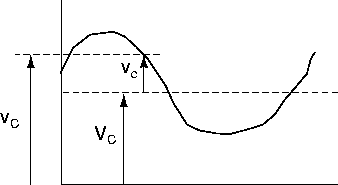 |
In order to analyse and design transistor circuits, techniques have been developed
to simplfy the calculations by decomposing current and voltage signals into DC and AC components.
As an example, consider the following expression
for the collector voltage (see Figure 99):
We first do DC calculations to determine the DC bias or operating point for the transistor. These calculations ignore all dynamic aspects, and only involve DC currents and voltages together with the DC model of section 8.2.3.
The total signal is viewed as a small variation about the operating point. When the DC calculations are complete, we do the AC calculations and the total response is the sum of the DC and AC components. The AC calculations use the AC model of section 8.2.4. When doing the AC calculations, we make simplifications: (i) capacitors are short circuits at the frequencies we are interested in, (ii) we zero out all DC sources, and (iii) we do not use phasor techniques.
ANU Engineering - ENGN2211